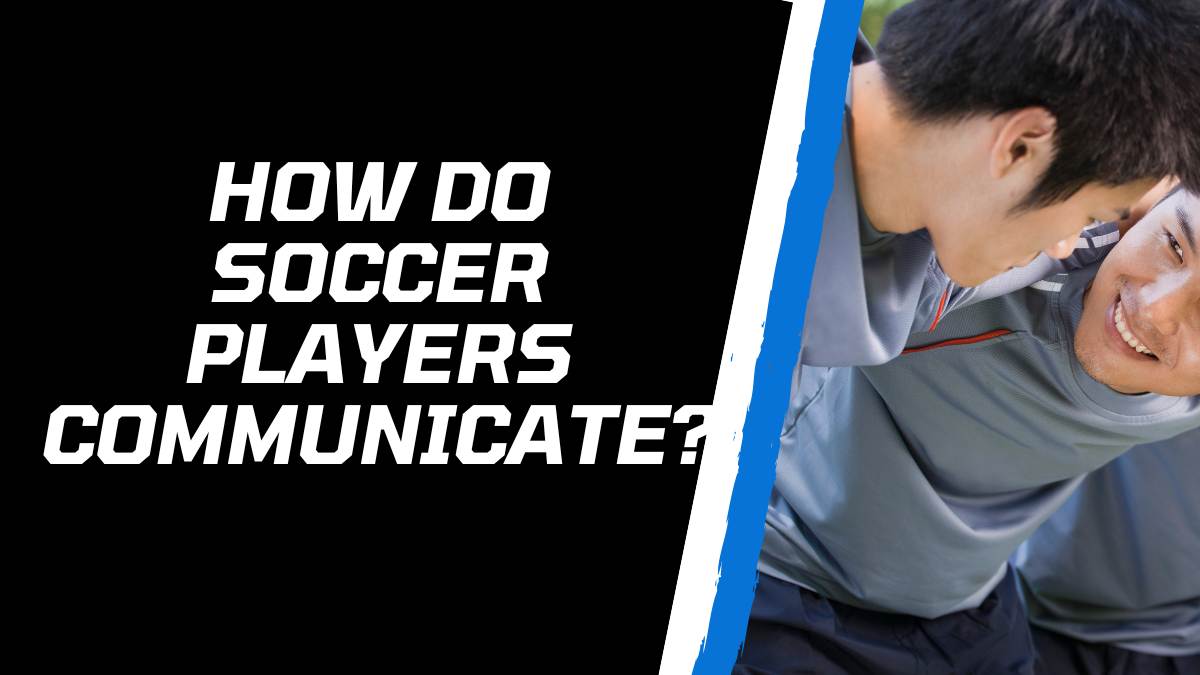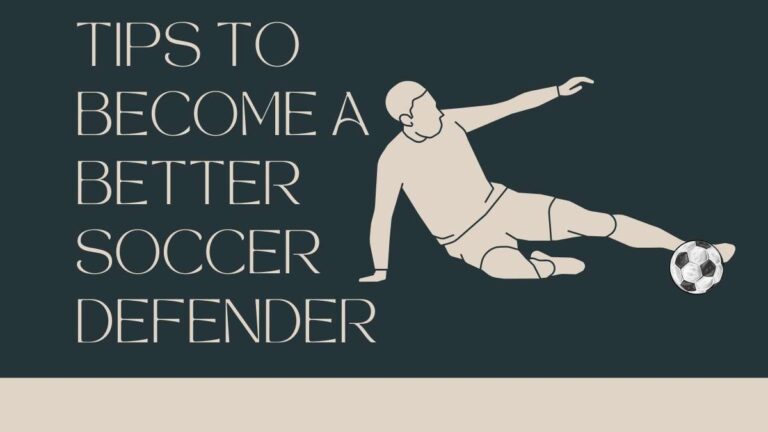How Do Soccer Players Communicate? (On and Off The Field)
In professional soccer, teams often have players from different countries who speak different languages. Someone who speaks one language may not be proficient in other languages, which is why there can be a barrier to communication.
Despite this linguistic diversity, soccer players find ways to overcome language barriers and communicate effectively with one another. Whether it be on or off the field, soccer players often communicate with each other through a number of methods. So, in this article, we will go over how do soccer players communicate with each other.
How Do Soccer Players Communicate on the Field?

On the field, it is important for soccer players to communicate properly so that they have proper cohesion and unity among themselves. Soccer players use different techniques to do that and we go over the main ones below:
Verbal Communication
Let’s start with the most obvious form of communication on the soccer field: good old-fashioned talking. Soccer players use verbal communication to give instructions, make quick decisions, and convey their intentions to teammates. You’ll often hear them shouting phrases like “man on!” to alert a teammate that an opponent is closing in, or “pass!” to request a pass.
They may also use coded words or specific signals that only their team understands, adding an extra layer of communication to confuse opponents. Verbal communication helps players stay connected and synchronized, even in the heat of the game.
Body Language
While words are powerful, sometimes actions speak louder than anything else on the soccer field. Body language plays a crucial role in how players communicate with each other. A simple glance can convey a message to a teammate about where to make a run, while a raised arm can signal for a pass.
Players use their bodies to express their intentions, provide visual cues, and express their emotions. Whether it’s a clenched fist to show determination or a thumbs-up to offer encouragement, body language helps soccer players establish a non-verbal connection and understanding, enabling them to anticipate each other’s moves without saying a word.
It’s like having a secret language that only those on the field can fully comprehend.
Shouts
In the midst of a high-intensity soccer match, you can often hear players shouting across the field. These shouts serve as a powerful means of communication. Players use their voices to call for the ball, direct their teammates, or alert them to potential dangers.
For example, you might hear a goalkeeper shouting “keeper!” to claim the ball and let their defenders know they’ve got it covered. Shouts also help players coordinate their movements and strategies in real-time, ensuring everyone is on the same page.
The energy and urgency behind these vocal cues can create a sense of unity and intensity on the field, driving the team towards their common goal.
Hand Signals
While words can be effective, there are times when silence is golden on the soccer field. This is where hand signals come into play. Players use their hands and arms to communicate messages quickly and discreetly, often without alerting the opposing team.
These signals can convey a variety of instructions or tactical information. For instance, a player might raise a hand with fingers outstretched to indicate that they are open and ready for a pass. Alternatively, a closed fist may signify that they want their teammate to hold onto the ball and maintain possession.
Hand signals allow for clear and concise communication, enabling players to make split-second decisions and adapt to changing situations seamlessly. It’s like a secret code that helps the team stay connected and one step ahead of their opponents.
How do Soccer Players Communicate Off the Field?
Communication among soccer players doesn’t end when the final whistle blows. Off the field, players utilize various channels to stay connected and maintain team cohesion. Some common ways how soccer players communicate with each other off the field are through group chats and through other players/coaches.
Group Chats


Soccer players also communicate off the field through direct interactions with their teammates and coaches. One-on-one conversations with fellow players are valuable for building relationships, discussing game insights, and offering support to one another. Players often share their experiences, provide feedback, and exchange advice, which helps strengthen the team’s dynamics and understanding.
Coaches play a vital role in facilitating off-field communication as well. They act as mentors, guiding players through their soccer journeys. Coaches communicate with players individually or in group settings to provide instructions, discuss game plans, and address any concerns. They analyze performances, offer constructive feedback, and inspire players to reach their full potential.
Through personalized discussions, team meetings, and mentoring sessions, coaches foster a supportive and collaborative environment, nurturing effective communication channels that translate into improved on-field performances.
How Do Coaches Communicate with Their Players?

Coaches are the guiding force behind a soccer team, and effective communication is at the heart of their role. But how do they connect with their players and convey their messages? Let’s dive into the fascinating world of coach-player communication!
Coaches employ a variety of methods to communicate with their players effectively. Firstly, they utilize verbal communication during team talks, training sessions, and halftime speeches. They use their voices to inspire, instruct, and motivate players, delivering clear messages and setting expectations. A well-timed pep talk can ignite a fire within the team, while concise tactical instructions help players understand their roles and responsibilities on the field.
Beyond verbal communication, coaches rely on visual aids to enhance their message. They use tactics boards, videos, and diagrams to illustrate strategies and demonstrate specific plays. By visualizing game scenarios, coaches help players better comprehend their tactical approach and make informed decisions during matches.
Conversations With Players

Coaches also recognize the value of individual conversations with players. These one-on-one interactions allow for personalized feedback and tailored guidance. Whether it’s discussing areas for improvement, providing encouragement, or addressing personal concerns, coaches establish a trusting relationship that facilitates open communication and fosters player development.
In addition to direct communication, coaches employ various tools and technologies. Video analysis has become an integral part of coaching, allowing them to dissect game footage and provide visual feedback to players. By reviewing specific moments, highlighting strengths, and pinpointing areas of improvement, coaches help players refine their skills and make better-informed decisions on the field.
Coaches understand that effective communication goes beyond the words spoken. They pay attention to non-verbal cues and body language, observing players’ reactions and emotions to gauge their understanding and engagement. By being attuned to their players’ needs, coaches can adapt their communication style and deliver messages in a way that resonates with each individual.
Ultimately, coaches aim to create an environment that fosters trust, respect, and open dialogue. They encourage players to share their ideas, concerns, and perspectives, understanding that effective two-way communication strengthens the bond between the coach and the team. By fostering a collaborative and communicative culture, coaches lay the foundation for success, enabling their players to thrive on and off the field.
So, the next time you see a coach passionately leading their team from the sidelines, remember that their communication skills play a vital role in shaping the players’ performance, instilling confidence, and driving the team towards their shared goals.
Conclusion
In conclusion, effective communication is the backbone of soccer. It connects players, coaches, and teams, enabling seamless coordination on and off the field. From verbal instructions and body language to shouts and hand signals, communication plays a vital role in achieving collective success in the beautiful game.
Like what you’ve read, check out more of our articles:







